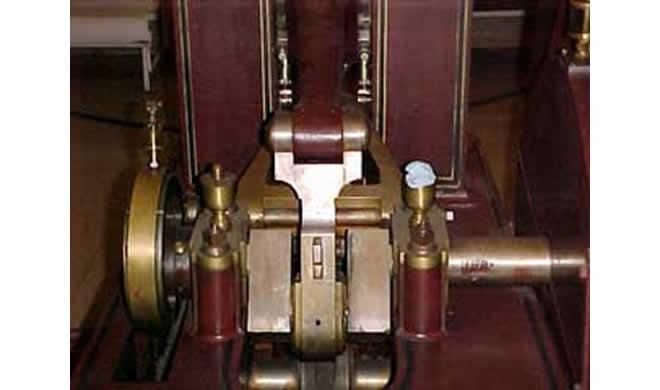
The Franklin Institute's collections include the first "powered" coining press to be used at the United States Mint in Philadelphia. Thonnelier invented the press in France in 1833. It was operated by steam, while earlier presses were operated by hand. Philadelphians Merrick, Agnew, and Tyler imported the press in 1836. When it arrived in Philadelphia, Franklin Peale of the U.S. Mint made improvements to this model. The coining press was first operated on March 22, 1836.
Robert Maskell Patterson, the director of the Mint from 1835 to 1851, wrote the following report to President Andrew Jackson in 1837:
"On the 23rd of March last (1836), the first steam coinage in America was executed at this Mint; and the performance of the press, in which the power of the lever is substituted for that of the screw, has answered all our expectations. Since that time, all the copper coins have been struck by this press, and it has been lately used with success for coining half dollars. The workmen are now engaged in making other steam presses; and as these are completed, the coining by human labor be abandoned, and the work that can be executed in...the Mint will be greatly increased."
There is some discrepancy about the date that appears on some of the U.S. Mint coins. One token that was printed says, "United States Mint, First Steam Coinage, Feb. 22, 1836." According to Director Patterson's report, however, March 23 is the correct date. Perhaps some coins were printed in advance, or February 22 was the date planned for the first printing. It also may have be chosen to coincide with George Washington's birthday, but delay or postponement ensued and the coining press wasn't operated until March 23. The February 22 coins were never recalled.
The press uses a "toggle joint," a special type of link mechanism which yields great pressure, instead of the screw press. This model could produce 100 coins a minute. David Gilbert remodeled the coining press in 1858. The U.S. Mint removed it from service in 1875 when George B. Soley purchased it as an "historic" relic. (Soley was a die sinker and maintained a shop on Chestnut Street in Philadelphia.) For the next thirty years, he exhibited it for his own and the public's benefit, following the "fair circuit" throughout the nation.
In 1876, Soley displayed the press at the Centennial Exposition and used it to strike the Centennial's medals. In 1883 it appeared at the opening of the Brooklyn Bridge and the Southern Exposition in Louisville. In 1893, Soley exhibited the coining press at the Columbian Exposition in Chicago, then in Buffalo for the Pan American Exposition in 190l, and St. Louis' Louisiana Purchase Exposition in 1904. At these events, he struck small 13mm medalets usually with an official logo on one side and the "Lords Prayer" on the other, which he sold for a quarter.
The Franklin Institute acquired the coining press in 1927 from Mrs. George B. Soley. It was then reconditioned and motorized. The press moved to the site of the new Science Museum in 1933-34, in order to strike aluminum tokens for visitors. A bust of Benjamin Franklin appeared on the souvenir coin, with the facade of The Franklin Institute on its reverse.
The American Numismatic Association (ANA) is very interested in this machine. This coining press is one of the truly historic gems of the numismatic world. On March 23rd, 2000, The Franklin Institute celebrated the 164th anniversary of the first strikings on this press. The press was moved from the first floor of the Museum to the rotunda, where commemorative coins were struck to celebrate the event. In August of 2000, the press appeared at a special exhibit at the ANA Convention, held here in Philadelphia. The Institute then lent the coining press to ANA for exhibit at their museum in Colorado Springs, CO.
Note: The object pictured above is part of The Franklin Institute's protected collection of objects. The images are ©The Franklin Institute. All rights are reserved.






